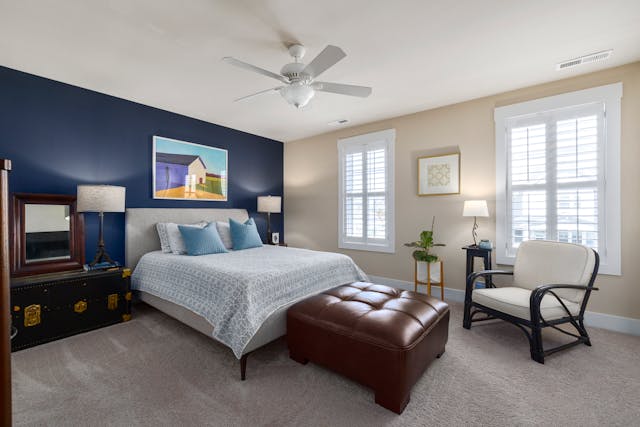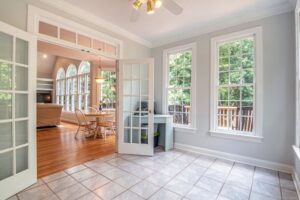
Not every window is the same, and neither are the rooms they sit in. When it comes to picking shutters, it’s not just about what looks good. It’s about how well they fit the purpose of each space. Some rooms need privacy, others need light, and some need something that just holds up under pressure.
Living Rooms: Clean, Flexible and Full of Light
This is the room that does it all. Whether you’re relaxing solo, hosting friends, or just trying to make the space look pulled-together, the living room deserves a window treatment that balances looks and function.
Window shutters Adelaide are a strong fit here because they’re adjustable. You can tilt them to block glare on the TV or throw them wide open on a sunny morning. They offer privacy without the heavy look of curtains, and they instantly make the space feel more finished, without trying too hard.
Plus, because the living room is often street-facing, they’re great for blocking out passersby while still letting in natural light. Handy if your couch is just a few metres from the window.
Bedrooms: All About Comfort and Privacy
Bedrooms are where shutters can really make a difference. If you’re sick of waking up with sunlight blazing through thin curtains, switching to shutters can change everything. Close them tight, and the room darkens. Not pitch-black, but enough to slow things down and help you get proper rest.
They’re also great if you live in a busy area or near streetlights – anything that throws unwanted light into the room. And privacy-wise, they’re spot-on. You don’t need to worry about neighbours seeing in, and you don’t have to keep them closed all the time either. Angle them to let light in without opening your bedroom up to the outside world.
Another bonus? They’re sturdy. Unlike blinds or fabrics that wear out or sag, shutters hold their shape and keep looking good over time.
Kitchens: Practical Wins Every Time
Kitchens get messy. Steam, splashes, cooking smells – it’s a lot for any window covering to handle. Shutters are one of the few options that actually work in this space and keep looking decent with minimal effort.
The key here is the material. Go for something moisture-resistant, and they’ll hold up well even near the sink or stove. Wiping them down is quick, and they won’t absorb smells or grease like fabrics can.
And from a style perspective, they keep things streamlined. No flapping curtains, no tangled cords. Just a clean look that suits pretty much any kitchen design, from minimal to farmhouse.
Bathrooms: Function First, Style Follows
Bathrooms can be tricky. You need privacy, obviously. But you also need something that can deal with humidity. Not everything can.
Shutters – especially the waterproof kind – tick both boxes. They’re built to handle damp conditions and won’t warp or peel over time. That means no stress about condensation or splashes from the shower.
They’re also great for making small bathrooms feel a bit brighter. Open them up during the day and you’ll get a nice flow of natural light without giving the neighbours a show. And if your bathroom looks out onto a close fence or wall, angled shutters still let in light while keeping things private.
Home Offices: Light Control is Everything
If you work from home, you already know how important your environment is. Lighting can make or break a workday, especially if you’re staring at a screen for hours. Shutters make it easy to get that right.
You can filter harsh sunlight without shutting it all out, which helps avoid glare while keeping the room from feeling like a cave. They also give the space a neat, uncluttered look – useful if you’re on video calls or just want a workspace that feels put together.
And if your desk faces the window? Shutters mean you can control exactly how much distraction you let in from outside.
Hallways: Often Forgotten, Surprisingly Useful
Hallways tend to get overlooked when it comes to design choices, but they’re worth thinking about. If yours has windows, even small ones, shutters can make a big difference.
They help with light distribution, especially in narrow or dark corridors. And since these spaces are often high-traffic, you want something durable that can take a few knocks. Shutters don’t swing or blow around like curtains, and they won’t look out of place in a transitional space.
Visually, they tie the flow of your home together. If you’ve used shutters in a couple of key rooms, adding them to the hallway gives things a sense of continuity without being over the top.
Dining Rooms: Mood, Light, and Looks
You don’t need much in a dining room, but the right light matters. Too bright, and it feels harsh. Too dark and it’s gloomy. Shutters let you set the mood depending on the time of day – wide open for a weekend brunch, tilted for a relaxed dinner.
They also bring a subtle sense of formality. Without being stuffy or overdone, they make the room feel more intentional. Like it’s a place to sit, eat, and slow down a bit.
And if your dining room is near the street or a neighbour’s fence, it’s nice to have the option to block out the view while still letting daylight in.
Not Just for Looks
What’s great about shutters is that they’re not just there for decoration. They’re practical. They work hard. And in the right material, they last for years without needing to be replaced or constantly cleaned.
You get full control over how much light and air come into each room. You don’t have to fuss with cords or worry about fabric stains. They’re safe around kids, easy to keep clean, and – when matched with the style of your home – they just make sense.




